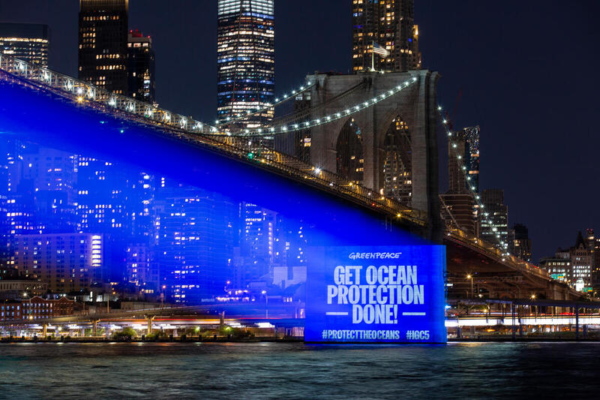After more than 15 years of formal and informal talks, this is the third time in less than a year that negotiators have converged on New York in what, yet again, is supposed to be a final and conclusive round of negotiations aimed at reaching a treaty to protect vast areas of the world’s ocean.
Last August, an earlier round of talks on the new United Nations ocean conservation treaty were suspended, with countries unable to reach an agreement on financing. Reuters reported that Sharing the proceeds of “marine genetic resources” and the establishment of ocean environmental impact assessment rules for development were also major sticking points. The actress Jane Fonda has delivered a petition with more than 5.5 million signatures to the chair of the talks.
A historic agreement reached in Montreal in December at the United Nation’s COP15 conference on biodiversity is helping fuel the sense of promise. Countries then committed themselves to protecting 30 percent of the world’s lands and seas by 2030 — a nearly impossible challenge if it fails to include the high seas, reports France24 and Greenpeace.
A message reads “Get Ocean Protection Done!”. Greenpeace USA activists project scenes onto New York’s Brooklyn Bridge on the eve of the IGC5 negotiations at the United Nations. Credit: POW / Greenpeace
“There seems to be an appetite to finalise the treaty”
According to Greenpeace, 11 million square kilometres (4.25 million square miles) of ocean must be protected every year between now and the end of the decade if a target of protecting 30% of the world’s land and sea by 2030 – known as “30 by 30” – is to be met.
Jessica Battle, ocean expert at the Worldwide Fund for Nature, said “There seems to be an appetite to actually finalise the treaty now”. Ms Battle considers the reasons why a high seas treaty is necessary to restore the health of the ocean in this piece from WWF International.
“Half of the world is at stake”
With nearly half the planet’s surface covered by high seas, the talks are of great importance, said Gladys Martinez de Lemos in Al Jazeera, executive director of the non-profit Interamerican Association for Environmental Defense, which focuses on environmental issues across Latin America.
“The treaty should be strong and ambitious, having the authority to establish high and fully protected areas in the high seas,” she said. “Half of the world is at stake these weeks at the United Nations.”
The success of the talks, scheduled to run until March 3, still “hinge on the finance question”, said Li Shuo, global policy advisor at Greenpeace, and China is set to be a major player in the negotiations, especially when it comes to bringing other developing nations on board.
The official United Nations webpages of the Intergovernmental Conference on Marine Biodiversity of Areas Beyond National Jurisdiction can be found here.

No Comment